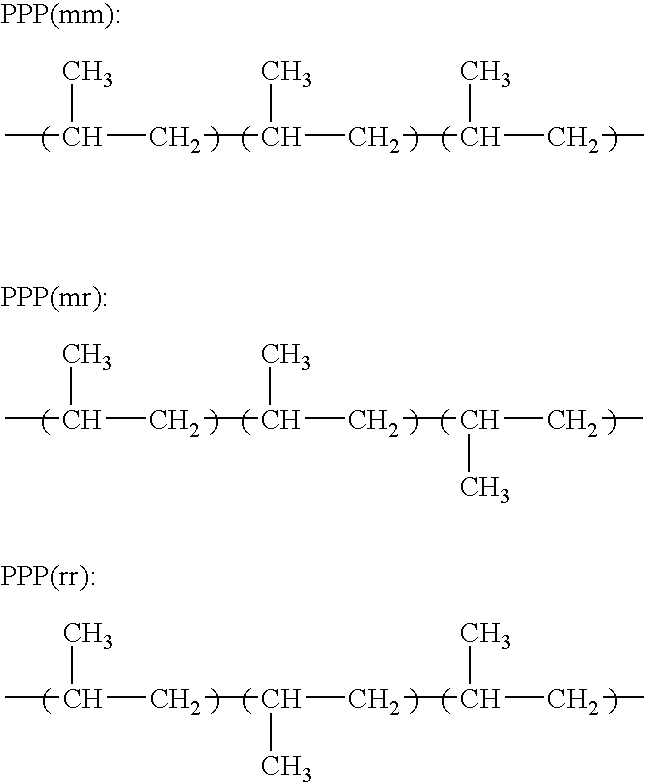Functionalized propylene copolymer adhesive composition
- Summary
- Abstract
- Description
- Claims
- Application Information
AI Technical Summary
Benefits of technology
Problems solved by technology
Method used
Image
Examples
examples
Materials
[0248] The random propylene polymers were produced as described above in the “Random Propylene Polymer” section using metallocene catalyst (dimethylsilylbisindenyl hafnium dimethyl with dimethylaniliniumtetrakis (pentafluorophenyl)borate) in a solution process at about 70° C.
[0249] Functionalization of RPP-1, RPP-2 and RPP-3 was carried out in a non-intermeshing counter-rotating twin screw extruder (30 mm, L / D=48) by using the following conditions: 97.5-98.5 wt % of polymer, 1.5-2.5 wt % of Crystalman™ maleic anhydride fed at a rate of 7 kg / hr to the hopper of the extruder and 0.24-0.40 wt % of a 10% solution of Luperox™ 101 dissolved in Marcol™ 52 oil added to the second barrel. The screw speed was set at 125 rpm and the following temperature profile was used: 180, 190, 190, 190° C. with the die at 180° C. Excess reagents as well as peroxide decomposition products were removed with vacuum prior to the recovery of the polymer.
[0250] Properties of the RPP's and the rando...
PUM
| Property | Measurement | Unit |
|---|---|---|
| Temperature | aaaaa | aaaaa |
| Fraction | aaaaa | aaaaa |
| Time | aaaaa | aaaaa |
Abstract
Description
Claims
Application Information
 Login to View More
Login to View More - R&D
- Intellectual Property
- Life Sciences
- Materials
- Tech Scout
- Unparalleled Data Quality
- Higher Quality Content
- 60% Fewer Hallucinations
Browse by: Latest US Patents, China's latest patents, Technical Efficacy Thesaurus, Application Domain, Technology Topic, Popular Technical Reports.
© 2025 PatSnap. All rights reserved.Legal|Privacy policy|Modern Slavery Act Transparency Statement|Sitemap|About US| Contact US: help@patsnap.com



